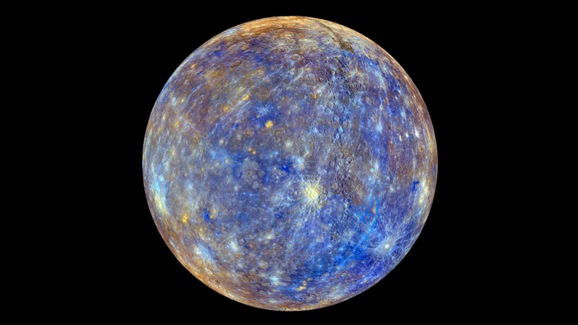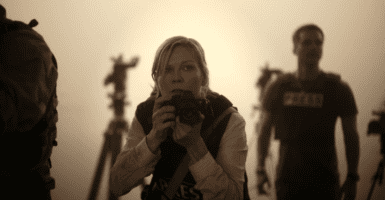Mercury Shines In Beautiful False-Color Image
This article is more than 2 years old
NASA’s Messenger probe is currently circling Mercury, the innermost planet in our solar system. After finishing up with its primary mission, which was to map the surface, the spacecraft has moved on to secondary concerns. Just the other day it beamed back this stunning new image of our tiny neighbor named after the Roman god of war.

This is a “false color” image, one designed to depict the vast richness of the chemical and mineral composition on the surface of the planet. Regardless of the intention, in this picture Mercury looks something like a giant marble, or maybe a beautiful piece of blown glass. Either way, this isn’t the way most of us normally envision the planet closest to the Sun.
The orange-tinted bits of this image show places where volcanic eruptions have left large deposits of material. Near the northernmost pole, you can see the massive Caloris Basin, one of largest known impact craters in the solar system. Caloris means “heat” in Latin, and the feature is so named because the Sun is almost always hovering directly overhead as the planet makes its 88-day orbit. That sounds uncomfortably warm. The crater also appears orange, as it is filled with volcanic remnants.
Now the smallest planet in our neck of the woods—since Pluto has recently been demoted from full-planet status—Mercury is the densest little planet around. Like Earth, Mercury also prominently features a planetary magnetic field, a trait not shared by Venus and Mars.












